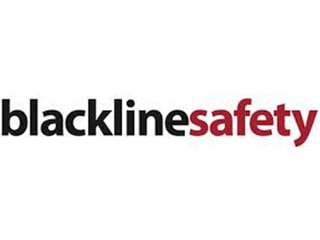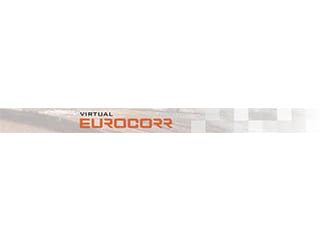
Latest News
Blackline Safety Corp. a leader of gas detection and connected safety solutions, has announced a partnership with NevadaNano, a developer and manufacturer of microelectromechanical systems (MEMS)-based gas sensors, to add their MPS™ Flammable Gas Sensor technology to its line-up of cloud-connected G7 wearable detection systems.
According to the company, where traditional LEL sensors fall short, the MPS Flammable Gas Sensor detects gas mixtures as accurately as it does a single gas, eliminating false alarms with built-in environmental compensation, poison immunity, fail-safe design, and a real-time conversion factor. Now a member of Blackline’s G7 gas sensor portfolio, the MPS sensor delivers the industry’s most linear response for the LEL of individual and mixed gas compositions for the 12 most common combustible gases, including hydrogen, methane, ethane, propane, ethylene, xylene. Across this wide range of gases, the MPS sensor maintains accuracy for over five years and incorporates internal diagnostics to automatically detect issues with the sensor itself.
Latest News
ISO
The following documents have obtained substantial support within the appropriate ISO technical committees during the past two months and have been submitted to the ISO member bodies for voting, or formal approval
ISO/DIS 1463 Metallic and oxide coatings — Measurement of coating thickness — Microscopical method (Revision of the 2003 standard)
ISO/FDIS 2409 Paints and varnishes — Crosscut test (Revision of the 2013 standard)
ISO/FDIS 2810 Paints and varnishes — Natural weathering of coatings — Exposure and assessment (Revision of the 2004 standard)
ISO/DIS 3613 Metallic and other inorganic coatings — Chromate conversion coatings on zinc, cadmium, aluminium-zinc alloys and zinc-aluminium alloys — Test methods (Revision of the 2010 standard)
ISO/DIS 4518 Metallic coatings — Measurement of coating thickness — Profilometric method (Revision of the 1980 standard
ISO/FDIS 8502-15 Preparation of steel substrates before application of paints and related products — Tests for the assessment of surface cleanliness — Part 15: Extraction of soluble contaminants for analysis by acid extraction
ISO/FDIS 11463 Corrosion of metals and alloys —Guidelines for the evaluation of pitting corrosion (Revision of the 1995 standard)
ISO/FDIS 15156-1, 2 and 3 Petroleum and natural gas industries — Materials for use in H2S-containing environments in oil and gas production — Part 1: General principles for selection of cracking-resistant materials ; Part 2: Cracking-resistant carbon and low-alloy steels, and the use of cast irons ; Part 3: Cracking-resistant CRAs (corrosion-resistant alloys) and other alloys (Revisions of the 2015 standards)
ISO/FDIS 22232-2 Non-destructive testing — Characterization and verification of ultrasonic test equipment — Part 2: Probes
ISO/FDIS 22858 Corrosion of metals and alloys — Electrochemical measurements — Test method for monitoring atmospheric corrosion
New international standards published during the past two months
ISO 7539-10:2020 Corrosion of metals and alloys — Stress corrosion testing — Part 10: Reverse U-bend method
ISO 11844-1:2020 Corrosion of metals and alloys — Classification of low corrosivity of indoor atmospheres — Part 1: Determination and estimation of indoor corrosivity
ISO 11844-2:2020 Corrosion of metals and alloys — Classification of low corrosivity of indoor atmospheres — Part 2: Determination of corrosion attack in indoor atmospheres
ISO 15528:2020 Paints, varnishes and raw materials for paints and varnishes — Sampling
ISO 21062:2020 Corrosion of metals and alloys — Determination of the corrosion rates of embedded steel reinforcement in concrete exposed to simulated marine environments
ISO 21809- 3:2016/Amd 1:2020 Petroleum and natural gas industries— External coatings for buried or submerged pipelines used in pipeline transportation systems — Part 3 Field joint coatings — Amendment 1: Introduction of mesh-backed coating systems
ISO 22410:2020 Corrosion of metals and alloys — Electrochemical measurement of ion transfer resistance to characterize the protective rust layer on weathering steel
SSPC
SSPC, The Society for Protective Coatings, has revised one guide and one joint standard practice
SSPC-PA Guide 11, Protecting Edges, Crevices, and Irregular Steel Surfaces by Stripe Coating.
The 2020 revision adds definitions for some previously undefined terms and provides guidance to specifiers for
• Determining when the stripe coat is applied (before or after a full-coat application)
• Determining suitability of a coating for use as a stripe coat (cumulative DFT, compatibility)
• Preparing outside corners and edges for application of a stripe coat
• Treatment of flame-cut edges prior to application of stripe coat.
Additional changes Include, examples of specification language in a non-mandatory appendix, and illustrations of areas that may be considered for stripe coating.
This guide discusses the technique called “stripe coating” or “striping” as a way of providing extra corrosion protection measures on edges, outside corners, crevices, bolt heads, welds, and other irregular
steel geometries, including optional techniques that can be used to improve coating performance. It is not intended to provide all-encompassing guidance but rather offer options when preparing a project specification. The engineer should evaluate and address details on a project-specific basis.
SSPC-CPC 1/NACE SP21412 Corrosion Prevention and Control Planning
This standard defines the key elements/composition of what corrosion prevention and control planning encompasses for design, manufacturing, construction, operation and sustainability of products and facilities. Although intended for use by US Federal agencies, it may be applied to other industries where appropriate. It provides a standardised framework for a supplier’s plan to control corrosion on products and facilities.
The 2020 revision includes:
• Adding two new key elements in the body of the standard that provide critical and desired characteristics for each element in the appendix.
• The addition of an evaluation methodology on how to assess corrosion prevention and control (CPC) planning of a programme/project as a second appendices.
• Now provides the key elements for performing CPC planning, desirable characteristics of each element, and a method for determining the overall adequacy of CPC planning for a given program or projects.

Latest News
Due to the COVID-19 pandemic, the EUROCORR 2020 organisers have decided to hold this year’s conference as a virtual event, which will take place from 7th-11th September 2020.
So far, more than 380 oral presentations and around 100 posters have been registered for the event. These submissions encompass all of the Working Parties and Task Forces devoted to the various aspects of corrosion and its prevention. Together with this extensive scientific programme, the following renowned colleagues will give plenary lectures.
Prof. Stuart Lyon (The University of Manchester, Corrosion and Protection Centre, Manchester, UK): European Corrosion Medal lecture.
Prof. Maria Forsyth (Deakin University, Institute for Frontier Materials, Burwood, Australia): “Environmentally friendly multifunctional corrosion inhibitor systems”.
Prof. Fabrizio Zucchi (University of Ferrara, Centro di Studi sulla Corrosione e Metallurgia « A. Daccò », Ferrara, Italy): Cavallaro Medal lecture.
Dr. Carol Frances Glover (University of Virginia, Centre for Electrochemical Science and Engineering, Charlottesville, VA, USA) Young EFC proposal: “The many colours of metal-based primers: corrosion protection mechanisms and latest developments”.
Dr Oumaïma Gharbi (Sorbonne Université, Campus Pierre et Marie Curie, Paris, France) Young EFC proposal: “The additive manufacturing of high strength Al alloys: a new challenge in corrosion science”.
Registration for the virtual EUROCORR 2020 is now open. Further details can be found at: www.eurocorr.org.
London Branch
The branch has been planning for its next session of technical meetings which start in October, with a joint meeting with LMS on “A new CP approach on non-isolated and aged pipelines”, by Pablo Merino, the Cathodic Protection Technical Authority at CLH.
If face-to-face meetings are still not possible due to the corona virus pandemic, then contingency plans are in hand to hold these online. Once the details have been finalised, notification will be sent to the branch mailing list, and will also be posted on the Institute website. The AGM for the 2019/2020 season still needs to held, and it is intended that this will take place at the first evening physical meeting.




